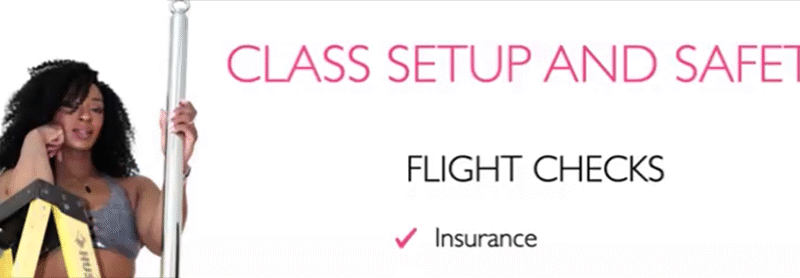A train-cation is a trip (usually away from home) where you focus for a specific…

What is Affiliate Marketing?
You may have heard the term “affiliate marketing” or have been asked if you offer affiliate commissions before.
In this post, we will cover what affiliate marketing is, how it affects your brand, and several ways to set up an affiliate program.
What Is Affiliate Marketing?
Affiliate marketing is a process where a blogger, brand ambassador, influencer, or other individual or company makes “passive income” by promoting your products. This income comes directly from sales they help you make, so you never pay an influencer money up front.
In a way, affiliate marketing is a way to hire a salesperson who is paid 100% through commission.
In most direct affiliate marketing, there is the Merchant, the Affiliate, and the Consumer.
The Merchant is you and your brand; the entity who makes and supplies products.
The Affiliate is your influencer of choice, be it a blogger, an individual pole dancer, or another company. They advertise your product for you and choose what form to represent it in, whether it’s in a review, a recommendation, or through social media promotion.
The Consumer is your customer, the end-user who will be enjoying and using your product. They find the affiliate, read what they have to say about the product, and buy from you.

In some cases, there is an intermediary step between the Merchant and the Affiliate called the Network. This Network helps connect Merchants to Affiliates. These Networks either charge the Merchant a fee to showcase their product to Affiliates, or they may take a cut of each sale they help make instead. How this works depends on the platform, however, in the pole industry, most affiliate programs are done directly from Merchant to Affiliate.
These affiliate links are tracked by what is called a “cookie”, which downloads on the user’s browser after they visit a link with a tracking parameter.
A tracking parameter might look something like this:
![]()
Everything after the ? in that link is what tells the browser to download a specific cookie to the user’s browser, and what that cookie should do.
In this particular example, it is telling the browser that it should download a cookie saying “this user came from this site,” and additionally, (indicated by the &) this user should get a specific coupon code for visiting through the affiliate’s website.
Browsers work this way with almost every site you visit, unless you are using a select few browsers. This is how personalized ads appear, relevant browsing history is selected, among many other things.
How Can Affiliates Benefit Your Brand?
Affiliates can benefit any brand who has a product to sell. These links enable you to expand your customer base and allow influencers to continue promoting products and earning an income through that medium.
Here is a higher-level view of the pros and cons that come with affiliate marketing. This might not be the right option for every brand or every situation, but it’s important to assess with all the information in front of you.
PROS:
- Allows you to expand your customer base and scale your monthly revenue
- The Affiliate is expected to advertise and market your product.
- Hands-off sales while Affiliates promote your brand for you.
CONS:
- Often costs money on an upfront or monthly basis, depending on your platform.
- Affiliates take a small percentage of each sale they help you make.
- You have to market your affiliate program or get pre-sign ups (at least at first.)
How Do You Set Up an Affiliate Program?
Affiliate tracking is the best option for vendors as you can control how much commission each affiliate receives, the minimum payout, and you can track both traffic and conversions in one panel.
If you are using WordPress, you can install a plugin like AffiliateWP, or alternatively sign up for an external site such as Affiliatly or FirstPromoter. There are many options available online, and the sign up process is straightforward and easy. Simply input the required information, build your affiliate rates – how much do you want to pay your affiliates? – and start promoting your affiliate program!
Other CMS’ (content management systems) – what most modern websites are built on – may also come with an option for affiliate links. Teachable is an example of such a platform, but is largely suitable for pre-recorded content such as pole tutorials.
These platforms often charge you, as the Merchant, either monthly or annually. This is an upfront cost, but easily considered a marketing expense and may be written off on taxes as such.
If you sell products that reach a wider audience base, such as “dance gear”, rather than “pole dancer shoes”, a Network might be a viable option for you.
An example of several Networks are ClickBank, PepperJam, and ShareASale.
These Networks will require information from you up front, and may either charge a monthly fee or a portion of sales.
This is a sample affiliate dashboard. This is what the Affiliate will see when they log in through the platform, and the tools they will use to track their metrics. Of course, the design and exact data varies from platform to platform.

If you use a Network and they provide these tools for the Affiliate, then they are more likely to charge per sale, since they can readily track that information.
An Additional Option: Amazon Associates
This option is suitable for brands who have physical products, rather than services or tutorials. This is not a way of directly providing an affiliate program, however, it is accessible for affiliate commissions if the Affiliate has access to Amazon Associates.
To qualify for Amazon Associates, you must have your products listed on Amazon. Amazon typically charges Merchants for listing items, and may charge per item sold. This comes out of the product price when quantifying sales. The affiliate commission is also charged to the product price, and if you choose to utilize Amazon’s warehouse space, then you may be charged up front for that.
Amazon Associates is Amazon’s way of providing an easy “in” for many affiliates who don’t want to manage multiple affiliate platform logins, or who don’t want to fuss with Networks.
An Amazon account who has signed up for Amazon Associates can simply click on several options under “Get Link”, choosing whether they want to supply the link as text, a clickable image, or both. This generates a referral code that can be used like any other Affiliate referral code.
The benefit of this is that no set-up is required on your end, outside of having your products listed and approved on the Amazon platform.
A potential downside of only using Amazon is that many buyers are beginning to boycott Amazon, and may prefer to order directly from the manufacturer or through a reseller.



